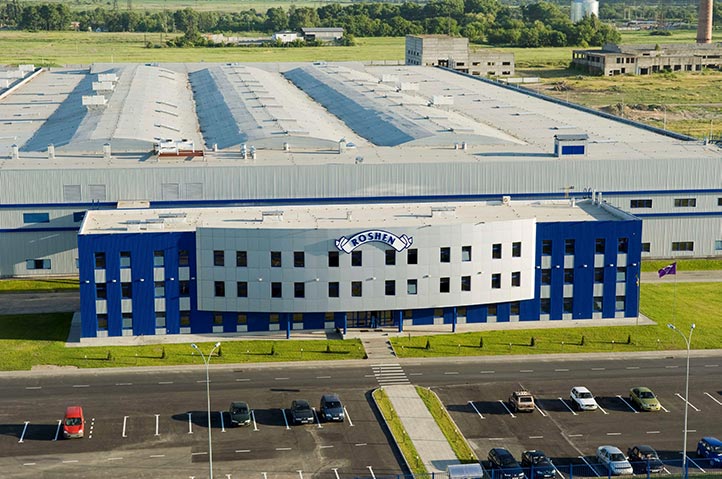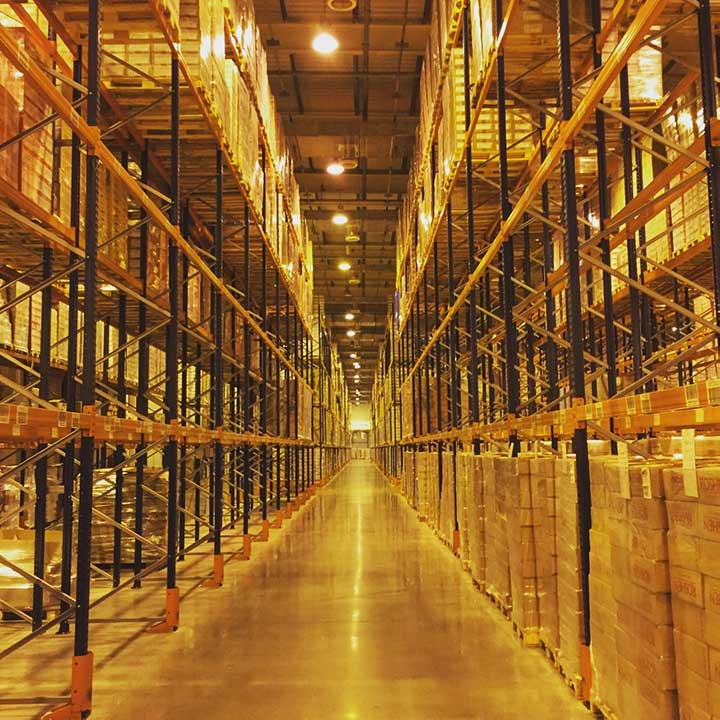The Sweet Taste of Success: Confectionery Manufacturer Roshen's Recipe for an Efficient Wireless Warehouse
This site uses cookies. By continuing to browse the site you are agreeing to our use of cookies. Read our privacy policy>
![]()
Enterprise products, solutions & services
With the global confectionary market valued at hundreds of billions of US dollars every year, the whole world has a sweet tooth, it seems. Ukraine's Roshen Confectionery Corporation sits at number 27 in the Global Top 100 Candy Companies ranking (compiled by Candy Industry) and, under its own "sweet quality mark," the company produces more than 350 kinds of products, including chocolate and jelly candy, caramel, toffee, chocolate bars, biscuits, wafers, sponge rolls, pastry, and cakes. With total production volumes reaching approximately 300,000 metric tons per year, Roshen's products are available in diverse markets, as far-flung as Asia, Europe, and North America. Using only high quality ingredients imported from across the world, the company's success can be attributed to its unique recipes paired with the latest technology, allowing it to produce products that satisfy taste buds across continents.

Roshen candy store
It might sound strange, but Roshen's confectionery products might not taste so sweet without the high-quality wireless solution installed across its warehouse sites. Indeed, Wi-Fi is critical for supporting daily operations, with a bandwidth-hungry Warehouse Management System (WMS) optimizing the flow of raw materials and finished products, automating tedious manual tasks and helping to save physical space and production costs. With 50 terminals situated across warehouses providing production data over the network, any network failure or downtime threatens to interrupt the entire production process, potentially impacting the product quality for end-users.
"We were looking for a reliable corporate-level solution to replace our existing wireless network that had been in use for around seven years," explained Vladyslav Samko, Head of the Information Technology (IT) Infrastructure Department at Roshen. "With aging equipment there are always risks of failure and negative consequences for the business." In addition, Roshen's IT team wanted to install a backup wireless Access Controller (AC), as insurance against a main controller failure.

Roshen's Logistic Center in Yagotyn, Ukraine
Back in 2018, Roshen's management wanted to implement a network solution that could provide seamless connectivity for warehouse staff, who use wireless handsets to carry out warehouse operations. Huawei conducted a thorough survey in order to properly understand the dynamics of the site, then designed a custom-made solution that perfectly matched Roshen's exact needs. Huawei suggested a new generation of wireless AC and Access Point (AP) technology, to improve both network coverage and speed and allow more data collection terminals and mobile terminals to log on concurrently.
Typically, warehouses are constructed from steel and have lots of metal racking inside. This is a problem, since Wi-Fi signals can be totally blocked. Huawei suggested its AP4000 Series APs, with external antennas, and an AP design that upgraded legacy cabling infrastructure and antennas. The solution also included the AC6000 Series Wireless Local Area Network ( WLAN ) AC, which features high scalability and offers users considerable flexibility in configuring the number of managed APs.
Of course, upgrading a network isn't always an easy task. "The most difficult task was to get existing wireless data collection terminals to perform, since they didn't support even basic modern wireless networking standards, such as IEEE 802.11r and IEEE 802.11k. But, after a long period of testing, it proved possible to match the configuration of the wireless network AC, so that it performed successfully with all devices," Mr. Samko said.
And for its newest warehouse, opened in 2020, Roshen chose AirEngine 6000 Series APs. These Wi-Fi 6 compatible APs can be connected to multiple external antennas to adapt to a complex warehouse environment. The APs' Smart Antennas achieve a 20% greater coverage distance than competitor Wi-Fi 6 products and offer a two-fold increase in overall signal strength.
The deployment of the AirEngine 6000 Series will be a driving force for the adoption of Internet of Things (IoT)-based solutions in Roshen's warehouses, looking to the future. The APs support Bluetooth Low-Energy (BLE) 5.0 by default and can adapt to multiple IoT protocols, such as Radio-Frequency Identification (RFID), through the built-in, dual-IoT slot design and Universal Serial Bus (USB) port. This meets access requirements for a diverse range of IoT terminals. In the future, using sensors, RFID tags, Autonomous Mobile Robots (AMR), and Automated Guided Vehicles (AGV), warehouse managers will be able to track goods in real-time, making the entire supply chain process far smoother and much more efficient.

Inside Roshen's warehouse
Any successful warehouse wireless project requires thorough, rigorous planning and design. Architects of the design must collect and carefully evaluate all data concerning the warehouse environment and its inventory. In the end, such attention to detail, designing a wireless network in collaboration with Roshen, is what made the implementation of the warehouse network solution so successful.
With carefully positioned Smart Antennas and APs, Huawei's solution provides maximum coverage over a wider area, providing a reliable signal around the clock and high-quality wireless coverage with zero blind spots. Even in rooms with ceiling heights of 12 meters, Wi-Fi performance meets all requirements.
"Implementing a wireless network from Huawei, we received an excellent, reliable solution that satisfied us in terms of price and quality. Over two years of operating it, the system has not required improvements or any additional intervention. Our warehouse operations run smoothly 24 hours a day, so we are fully satisfied with the system," Mr. Samko concluded.
Now, employees can work in any part of the company's warehouses and know that they can remain online. And, with better communications, their performance levels have significantly increased. Storage and delivery systems have been enhanced, with more rapid and accurate updates made for every order picked from the shelves. The AirEngine solution in the new warehouse is also geared for future growth, as more and more IoT applications come online, protecting the investment the company has made — and that's the icing on the cake.